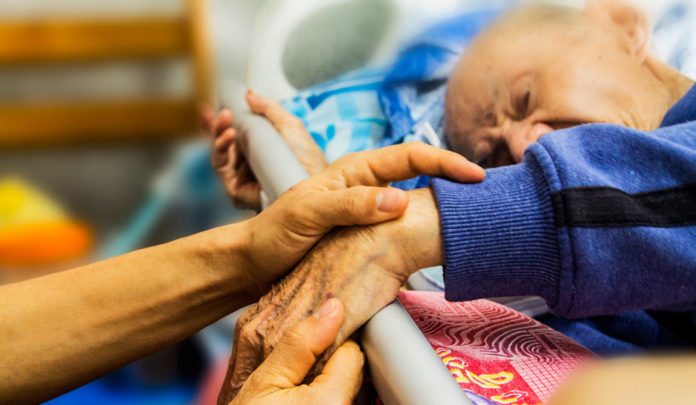(from the Alphonsian Academy Blog)
On June 25, 2020, the Holy Father approved the Samaritanus bonus, a Letter of the Congregation for the Doctrine of the Faith on caring for people in critical and terminal phases of life. The Samaritanus bonus is in continuity with the rich Magisterium on the themes of the end of life, but with its own characteristics. It responds to a changed cultural, medical and juridical context and reflects the pastoral style of Pope Francis and his attention to the fragile and vulnerable aspects of human experience.
The Letter consists of five sections. The first section Care for the Sick starts from the observation that “it is difficult to recognize the profound value of human life when, despite every care effort, it continues to appear to us in its weakness and fragility“, but it is precisely this vulnerability that “gives foundation to the ethics of caring” in imitation of the Good Samaritan. For this reason, the Letter asks those who take care of people in critical and terminal phases of life “to have a contemplative gaze” that does not take possession of the life of the other, but captures their uniqueness and unrepeatability and takes care of them. Healing, in fact, is not always possible, but one can always take care of it.
In the second section The living experience of the suffering Christ and the proclamation of hope, the possibility of experiencing “the closeness of God made man to the many forms of anguish and pain that can affect the sick and their families during the long days of illness and at the end of life” is affirmed. The crucified Christ offers himself to the suffering person as “a credible interlocutor to whom to address the word, the thought, to whom to deliver anguish and fear”.
The third section asks us to have the heart that sees the Samaritan to open ourselves to compassion and let ourselves be questioned by fragility, recognizing in it a call from God to recognize life as a sacred and inviolable gift.
In the fourth section, the cultural obstacles that obscure the sacred value of every human life are evoked: an equivocal use of the concept of the dignity of dying, an erroneous understanding of compassion that leads to euthanasia, the exasperated individualism that condemns loneliness and impoverishes personal relationships by discarding the most fragile lives.
Against this anthropological background, the fifth and most extensive section dedicated to The Teaching of the Magisterium is placed. It is the most in-depth treatment so far produced by the Magisterium on the ethics of the end of life and is divided into twelve points. It deals first of all with the drama of euthanasia and assisted suicide, which is a defeat for medicine and society (V,1). Concerning treatment, it is recalled the moral obligation to exclude therapeutic fury and the possibility of resorting to extraordinary and/or disproportionate means, bearing in mind that “proportionality … refers to the totality of the good of the sick person” (V,2). The duty to provide, as long as they are beneficial to the patient, basic care and, in particular, nutrition and hydration, is reaffirmed (V,3). The part dedicated to palliative care is beautiful and timely: it is “a tangible symbol of compassionate care for those who suffer” and is to be understood in a broader sense than the traditional vision “as an integrated approach to care” (V,4). In the care of the terminally ill, the role of the family is central. Therefore, it must receive adequate help and means and be followed on a human and spiritual level “because it constitutes a single unit of care with the sick” (V,5). A novelty for the magisterial documents is the extensive treatment of the accompaniment and care of critical situations in the pediatric, prenatal age (V,6). Some technical inaccuracies can be noted in the topic of analgesic therapies and palliative sedation, but it is important to have dealt with it professionally (V,7). The question of the dignity of discarded lives returns in reference to people in a vegetative state and minimal consciousness for whom the continuity of minimal therapies is requested, but together with adequate support for all those who, family members or not, take care of them (V,7). Linked to the problem of euthanasia and assisted suicide, conscientious objection by health care workers and Catholic institutions is being raised, leading – if necessary – to civil disobedience (V,9). After a reflection on the pastoral and sacramental accompaniment of those who go towards death (V,10), the problem of pastoral closeness to those who ask for euthanasia or assisted suicide and the impossible reconciliation between choices of death and the sacraments of faith (V,11) is addressed for the first time. A final point concerns the reform of the educational system and the training of health care workers to open up to the needs of integral care of the person.
In a cultural context that seems to place all faith in technoscience, the Samaritanus bonus places human relationships at the centre of the act of care. While euthanasia and assisted suicide express renunciation and despair, the Letter invites us to find meaning in the twilight of life, when the human frailty of which we are kneaded painfully emerges, and only a purified look can see in the face of the sick person the features of Christus patiens, becoming com-passion and closeness.
Fr. Maurizio P. Faggioni, O.F.M.
(the original text is in Italian)







